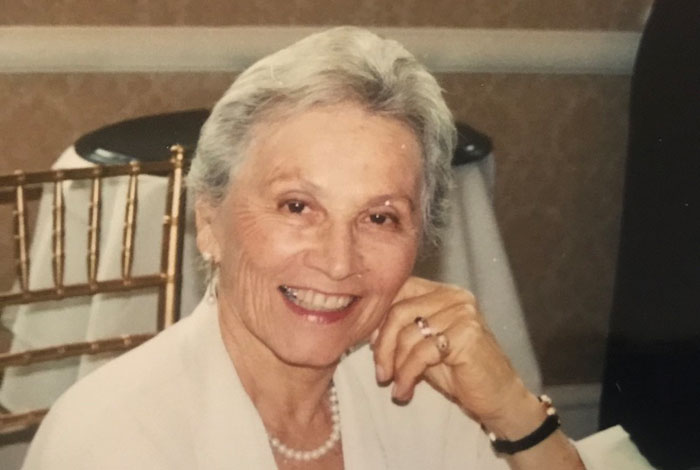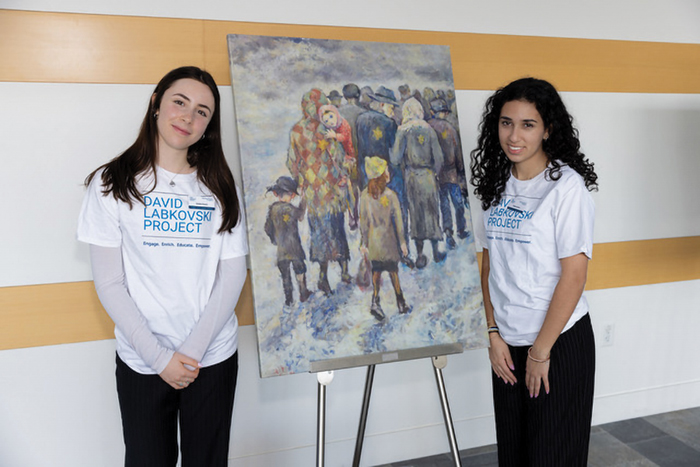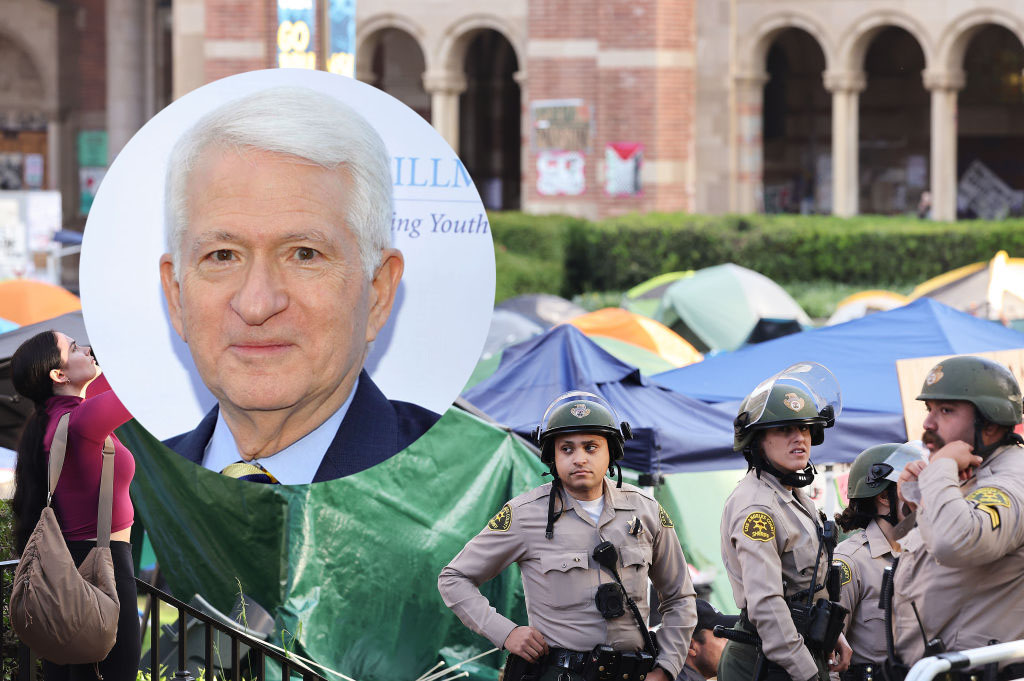William Peter Blatty was a Georgetown University student in August 1949 when he came across a front-page story in the Washington Post titled “Priest Frees Mt. Rainier Boy Reported Held in Devil’s Grip.” Blatty, a devout Catholic, was fascinated by the accounts of the 14-year-old’s bed violently shaking and torrents of curses in Latin whenever the exorcist commanded the demon to leave the boy.
Two decades later, Blatty recalled this case and others to create his 1971 iconic supernatural suspense novel, “The Exorcist,” in which a 12-year-old girl named Regan is possessed by a malevolent spirit. The novel became a best-seller and was turned into an Oscar-winning film, an international sensation that had patrons fainting in the theater as the Regan character spewed thick green vomit, turned her head around 360 degrees and masturbated with a crucifix.
Blatty has insisted that he never intended to terrify viewers: “What I thought I was writing was a novel of faith in the popular dress of a thrilling and suspenseful detective story — in other words a sermon that no one could possibly sleep through,” Blatty wrote in a piece for Fox News last year.

John Pielmeier
Even so, his screenplay for William Friedkin’s 1973 movie adaptation proved so startlingly horrific that it spawned sequels and prequels as well as a genre of films spotlighting the demonic — from “The Omen” franchise to the upcoming “The Possession,” which draws on the Jewish legend of the dybbuk, a spirit that possesses a person.
Now Blatty’s novel has been adapted into a play, “The Exorcist,” by John Pielmeier (“Agnes of God”), which will have its world premiere at the Geffen Playhouse on July 11. Starring Brooke Shields and Richard Chamberlain, and directed by John Doyle (“Sweeney Todd”), it revisits the story of Regan; her mother, Chris (Shields), a movie star and self-described atheist; Father Damien Karras (David Wilson Barnes), the Jesuit psychiatrist suffering a crisis of faith; and chief exorcist Father Merrin (Chamberlain), who is called on to cast out the demon in the climactic sequences at the end of the play.
But if you expect the new drama to have the movie’s grisly effects, think again. “From the start I said I have no interest in trying to reproduce the movie on stage — this should be a piece that is very much of the theater,” Pielmeier, 63, said in an interview at the Geffen on a recent morning. “We didn’t want green vomit or spinning heads, otherwise we risked getting into the arena of camp.”
The set is simple — just a table and chairs — and the dialogue spare in order to spotlight the story and to allow viewers to use their imagination. Unlike the casting in the film, Regan will be played by an adult actress, avoiding the controversy that erupted when 13-year-old Linda Blair portrayed Regan in the movie. “You don’t want a child cursing and grotesquely arching her body, because then there are people who are going to say, ‘How come her parents let her do that?’ ” Pielmeier explained. “You don’t want it to break the fourth wall, or rather, the fifth wall, because we’re already breaking the fourth wall in the play.”
Story continues after the jump
Video by Naomi Pfefferman; Edited by Jeffrey Hensiek
Early in the production, Merrin addresses the audience, describing the history of the concept of Satan, which in Hebrew “means adversary, one who opposes,” he says. And while the play is set in the world of Catholicism, its themes should also resonate for Jews and other non-Catholics: “It raises the question of the existence of evil, and certainly Father Merrin comes down very strongly on the side of yes, it does exist,” Pielmeier said. “The opening line of the play is when Merrin says, ‘For anyone who doubts the existence of the devil, as I once did, I have three words: Auschwitz. Cambodia. Somalia.’ Even nonbelievers can accept the devil as a metaphor, for all the bad, dark, horrible s—- that happens in the world,” Pielmeier said. “What interests me is how, in our moments of despair, the demonic — or whatever you want to call it, the dark side — can come to us.”
One nonbeliever involved in the show is Teller, of the magic team Penn & Teller, whose father was a Russian Jew but who is such a staunch atheist that, among other endeavors, he has attempted to debunk religion as well as the supernatural on the duo’s “Penn & Teller: Bulls—-” TV series. As the creative consultant for “The Exorcist,” he may be responsible for illusions such as Regan levitating; although he has to keep mum about his work, he will say that supernatural events will be represented through elements of church ritual, often with a disturbing twist. As for why the atheist was drawn to such a religious story, Teller said, simply, “I’m a nut for a good horror yarn. This story is essentially the supernaturalization of the idea of the play ‘The Bad Seed’ — it really is about how frightening children can be to their parents. The demon child has always been a very powerful image, and you’ve also got the devil here, which is very powerful as well.”
Pielmeier — a compact man dressed casually in jeans, a pink-and-white striped shirt and magenta socks with his sneakers — spoke thoughtfully of his interest in religious themes. He says he was a devout Catholic from childhood until his senior year at a parochial high school in Altoona, Pa., when, while reading Thomas Hardy’s “Return of the Native,” he was shattered by a section of the story in which a woman is bitten by a poisonous snake and dies. “It was a fictional character, but [her death] bothered me deeply and threw me into a place where I started asking why God would allow such things to happen — ‘Why do bad things happen to good people?’ ” said Pielmeier, who nevertheless went on to Catholic University in Washington, D.C. “I became very worried and depressed for a time.”
Pielmeier stopped attending church while in college and never went back, although, he added, “I’ve remained fascinated with Catholicism and the richness of that tradition, just as the tradition of Judaism is incredibly rich.”

Richard Chamberlain and Brooke Shields
He wrote his play “Agnes of God,” as well as the screenplay for the 1985 film version, in order to explore what might happen if someone who might have been considered a saint in medieval times was transported to the 20th century — would they have been deemed godly or insane? When producers approached Pielmeier to adapt Blatty’s novel “The Exorcist,” he saw another opportunity to examine the argument of faith versus Freud.
Pielmeier traveled to Blatty’s home in Maryland to pitch his idea: “It was basically to have no extraordinary special effects, a small cast who are on stage all the time, very Brechtian in presentation, with the demon present on stage,” he said. “I didn’t just want a voice coming out of a little girl; I wanted the demon to be present, as this is in many ways a debate between the demon and
Father Karras, like ‘The Devil and Daniel Webster,’ ” he said. “And I didn’t want [Karras] debating with some growling voice coming out of an actor who was trying to lip-synch with a pre-recorded voice.”
It was Doyle — who is known for his minimalist productions — who suggested that the demon be portrayed not just by one actor, but by four members of the ensemble, who also play other roles. To embody the fiend, they don priests’ cassocks as their voices boom like a Greek chorus, “which enhances the notion that the demon is faceless, and that he can be anywhere,” Doyle said.
Shields, who is known predominantly for her comic roles, said she was looking for a dramatic piece when “The Exorcist” came her way, even though, she said, “Part of me was hoping I wouldn’t like it, because it’s hardly a light topic to do eight times a week.” She was drawn, however, to the poetry of the text and to the themes of good and evil, faith and doubt, courage and despair, as well as motherhood on the edge.
But rehearsals have proved grueling — “harder than I had imagined,” she said. The atmosphere is meant to be stifling for the audience, with no intermission for respite, and Shields feels the claustrophobia as well.
The exorcism scenes, in particular, have been uncomfortable: “It’s so creepy; just being in that rehearsal room is eerie,” she said. “The language is rough and things are said that are vile. But there is also such a lyricism in the way that John Doyle directs; you feel the power of the characters of faith that allows them to face this horror.”
“Deep down we realize how fragile everything in our lives is, including our culture and our religions — everything in civilization is just skin deep,” Chamberlain said. “It just takes a bit of pressure — not enough food, for example — to turn us into beasts.” And herein lies our enduring obsession with the demonic: “We enjoy seeing the mayhem personified,” Chamberlain said, “because it’s cathartic.”
Tickets to “The Exorcist,” which plays at the Geffen July 11- Aug. 12, are available in-person at the Geffen Playhouse box office, via phone at 310-208-5454 or online at www.geffenplayhouse.com.






















 More news and opinions than at a Shabbat dinner, right in your inbox.
More news and opinions than at a Shabbat dinner, right in your inbox.